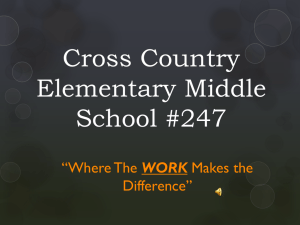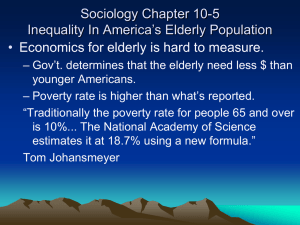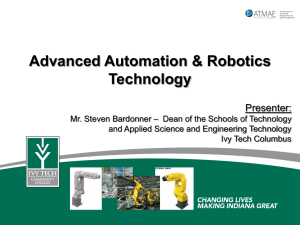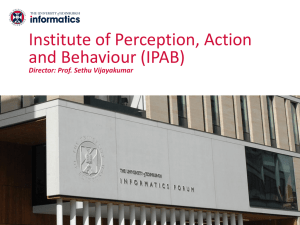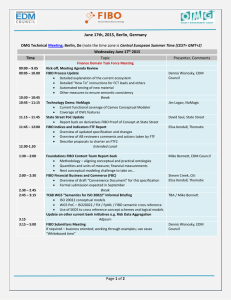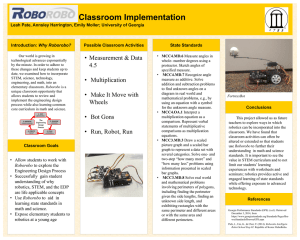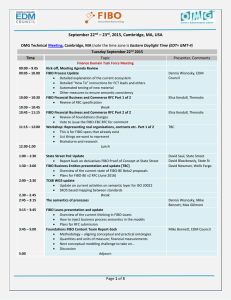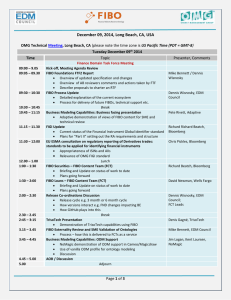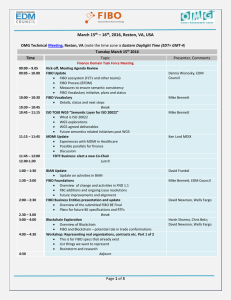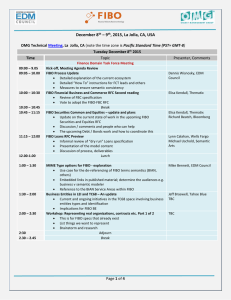Assistive Devices for Disabled or Elderly People
advertisement
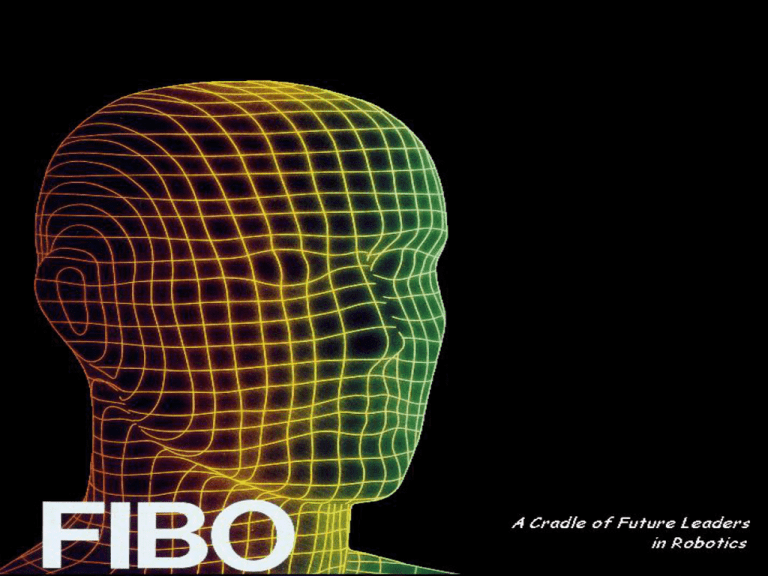
• FIBO Assistive Technology (AT) for Disabled/Elderly People Djitt Laowattana, PhD Institute of Field Robotics King Mongkut’s Intitute of Technology Thonburi Assistive Technology (AT) - Technology/Devices to Enhance capability of seniors/elderly and handicaps “Less Dependence” - Eliminate possible difficulty to perform necessary activities - Resulting motion may not resemble to normal humans Types of AT “National Classification System for Assistive Technology Devices and Services” by The National Institute on Disability and Rehabilitation Research, USA 1. Architectural Elements 2. Sensory Elements 3. Computers 4. Controls 5. Independent Living 6. Mobility 7. Orthotics/Prosthetics 8. Recreation/Leisure/Sports 9. Modified Furniture/Furnishings 10. Services ***In reality, ATs appear in many forms combined*** 1. Architectural Elements – Intelligent Mechanism for opening/closing doors based on speech and light beam technology – Modification of utilities i.e. baht room, stairs, inclination to comfort the elderly 2. Sensory Elements • Vision Aids – Haptics System, representing human eyes for estimating exact areas Camera Extraction of Visual Scene – Alphabet to sound – Image amplification Feedback of Visual Scene (edge, person, door,…) 2. Sensory Elements • Hearing Aids – Amplify environmental sounds, cutting unwanted noise – Flash light replacing door knocking – Word caption telephone 2. Sensory Elements • Cognitive Aids – Keyboard with group keys assigned colors and location, special buttons for launching desired application – Text-to-audio-software 2. Sensory Elements • Augmentative Communication Aids – Voice Generator with Text-to-Speech function – Combining augmented image data to support human visual system 3. Computers • Hardware and Software – HeadMouse on top of monitor, mapping the eye motion to positions of pointers on screen – Braille Character Keyboard – Voice actuators 4. Controls • Devices helping elderly having difficulty in movingto perform some tasks – Sip/Puff switch by closing lips with pressure, exhale air through mouth – Voice Command – Software connecting all facility to a computer ex. BAS 5. Independent Living • อุปกรณ์ที่ช่วยให้ ผ้ พู ิการ/ผู้สงู อายุสามารถดาเนินชีวิตประจาวันได้ ตามปกติ ตังแต่ ้ การแต่งตัว ทาครัว เข้ าห้ องน ้า ทาความสะอาด กิน นอน นัง่ เดิน เช่น – หุน่ ยนต์ทาความสะอาดบ้ าน – แปรงสีฟันไฟฟ้า – Sensor สาหรับฝั กบัวและชักโครกอัตโนมัติ – อุปกรณ์ช่วยป้อนอาหาร 6. Mobility • Motion/Mobile Facilitator – Walking Aids – Manual, Electric Mobile Chairs – Supporting Bars 7. Orthotics/Prosthetics • For amputees Bionic hand controlled by nerve signal Variable Damp Artificial Leg by FIBO Exoskeleton supporting weak muscle , useful for rehabilitation 8. Recreation/Leisure/Sports • Enhancing ability in performing recreation activities as normal life – Special Prosthetics for exercising – Software for synthesizing sounds for music performance 9. Modified Furniture/Furnishings • Focusing on safety and ergonomics – Adjustable level bed, easing get in and out – Standing suporter 10. Services • Make them less dependence on us – Public Rest Room, Crossroad, Telephone Access, Integration of Assistive Technology: The Examples Smart Home Technology • Integrate all AT to homes tailored for elderly and handicaps ระบบควบคุมอุปกรณ์ทงหมดภายในบ้ ั้ าน Remote Monitoring • Internet with local sensors connecting one hospital to many smart homes for monitoring their health • Tele-operation robot, serving elderly for food, water and medicine taking Robotics for Disabled/Elderly People Various trays for various activities Tray for food taking Tray for teeth brushing Tray for facial cosmatic Robotics for Disabled/Elderly People Robot for rehabilitation Robot curing Autism A Cradle of Future Leaders in Robotics http://fibo.kmutt.ac.th Dr. Laowattana’s research interest is primarily in fundamental areas of robotic dexterity, design for manufacturing / assembly of high precision systems. He was awarded an honor with his B.Eng. from King Mongkut’s University of Technology Thonburi (KMUTT). Under the Monbusho Program, he received a certificate in Precision Mechanics and Robotics at Kyoto University. He subsequently obtained his PhD. in 1994 from Carnegie Mellon University, USA under financial support from the Fulbright Fellowship Program and the AT&T Advanced Research Program. In 1996, he also received a certificate in Management of Technology from Massachusetts Institute of Technology (MIT) USA. He holds two US patents for robotic devices. He is the founding director of the Institute of Field Robotics Development (FIBO) and the first President of Thai Robotics Society (TRS). He served as an executive board member of TOT, the largest telecom public company. Presently, he is director of Hard disk Cluster Program at National Science and Technology Development Agency (NSTDA). His responsibility is to strengthen hard disk industry in Thailand by formulating critical collaborative networks in the areas of R&D, HRD and Supply Chain Development among professionals from 30 national universities/laboratories and four multi-national companies, producing one of the highest annual turnover of 500 billions baht



